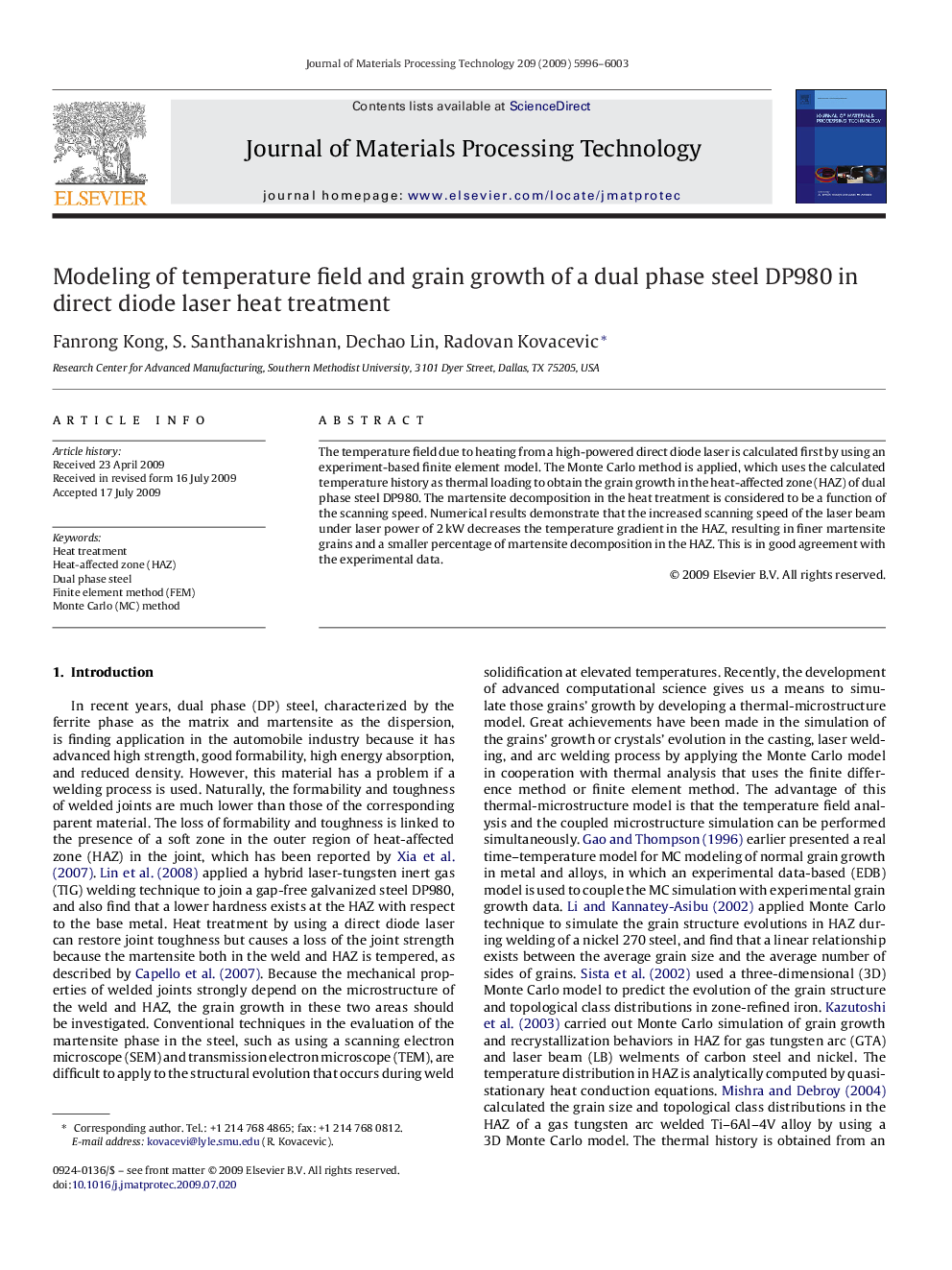| Article ID | Journal | Published Year | Pages | File Type |
|---|---|---|---|---|
| 793252 | Journal of Materials Processing Technology | 2009 | 8 Pages |
Abstract
The temperature field due to heating from a high-powered direct diode laser is calculated first by using an experiment-based finite element model. The Monte Carlo method is applied, which uses the calculated temperature history as thermal loading to obtain the grain growth in the heat-affected zone (HAZ) of dual phase steel DP980. The martensite decomposition in the heat treatment is considered to be a function of the scanning speed. Numerical results demonstrate that the increased scanning speed of the laser beam under laser power of 2 kW decreases the temperature gradient in the HAZ, resulting in finer martensite grains and a smaller percentage of martensite decomposition in the HAZ. This is in good agreement with the experimental data.
Related Topics
Physical Sciences and Engineering
Engineering
Industrial and Manufacturing Engineering
Authors
Fanrong Kong, S. Santhanakrishnan, Dechao Lin, Radovan Kovacevic,
